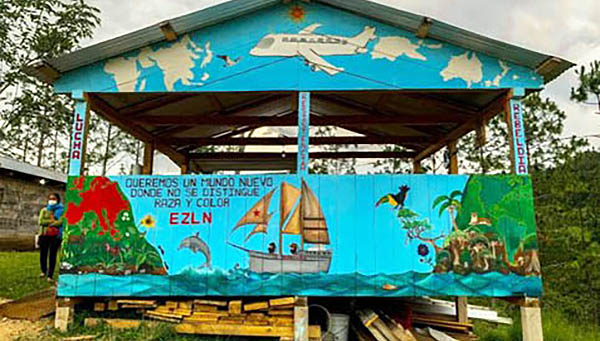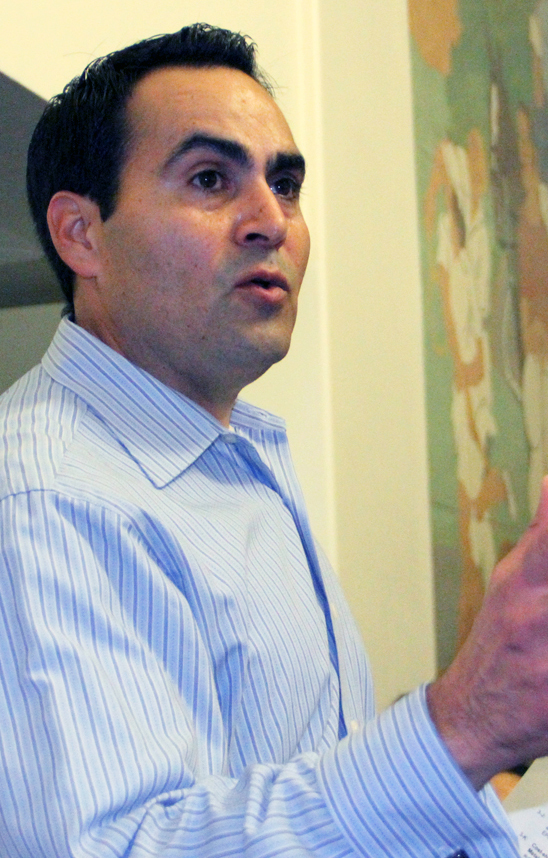The weekly newsletter of the México Solidarity Project

July 21, 2021/ This week’s issue/ Meizhu Lui, for the editorial team
Monuments in spaces where the public congregates can be as much advertising as art. Monuments often function as “ads” for conquerors and military commanders. The statues say to all who walk by: “Buy this story, accept this guy as your hero!”
In our interview this week, Santa Monica City Councilor Oscar De La Torre challenges the message of a mural at his City Hall entrance that “whitewashes” how the Spanish brutally subjugated indigenous people. De La Torre and his California community aren’t buying that message. Public art, they insist, must not put white supremacy on a pedestal. That message is getting across elsewhere. In Charlottesville, Virginia, public outrage recently pushed Confederate General Robert E. Lee off his high horse.
Art for the public can and should be inspirational and aspirational. At this task, the Zapatistas have become masters, as they show in their recent “invasion” of Europe, a complex work of art complete with a “navy” and an “air force.” The boat they sailed in and the war plane they are building mimic and mock the instruments of traditional military power. Their army and navy come to conquer with the power of love, respect, and cooperation.
The Zapatista artwork’s images and artifacts — their voyage from México itself — come across as whimsical, even humorous. But the Zapatistas aren’t joking. They’ve demonstrated over the years that they can be capable of real military defense. What they have created, what they defend, the story they want to tell all amount to a vision and a model of what can be. Objects in the public square can themselves be instruments of oppression or vehicles for liberation. The people are choosing. The people will choose.

Oscar De La Torre’s parents hailed from Jalisco, México. But he was born and bred in Santa Monica, California, a city he has now served as an elected school board member and more recently as a city councilor. In that service, De La Torre has never pulled his punches, especially when it comes to naming white supremacist practices and demanding they be ended.
For nearly 80 years now, a mural has been the first thing anyone entering the Santa Monica City Hall sees. What does that mural depict?
The mural depicts Santa Monica’s historical starting point in 1769, when the conquistadors arrived to colonize at sword point what was then still a part of México. We see a Spanish priest, with an armored soldier holding a sword standing next to him. The priest is pointing at two naked Native Americans kneeling at his feet next to some water.
Opposite the mural of Santa Monica’s founding is another mural intended to offer a vision of the city’s future. The people in this image are all white — even the dog is blond! — and they’re playing tennis and polo, sports of the rich.

To read the rest of this exciting bulletin click here!